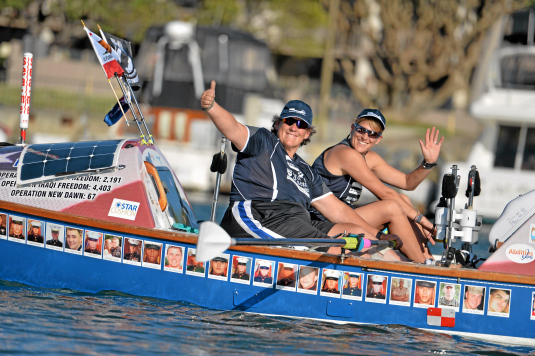I was reading this article about climate in The Guardian, and one word leaped out. Feasible.
“Chris Stark, chief executive of the CCC (Committee on Climate Change), defended the logic behind its 2050 target, which he said was based on “detailed considerations of the climate science, based on the IPCC’s work, the international context, including the Paris agreement and ‘equity’ considerations, and the feasible speed and cost at which UK emissions can be reduced”.”
While I’m all for pragmatism, I’m not for using feasibility as an excuse for wishy-washy targets and procrastination. If you were a smoker and your doctor told that you had emphysema, and would die in six months if you carried on smoking, I don’t think you would take an incremental approach to reducing your consumption of cigarettes. I think it would scare the living daylights out of you, and you would stop immediately.
As the late, great Polly Higgins used to say, if you heard your neighbours beating their kids, you wouldn’t go round and ask them to beat the kids a little less. You would ask them to stop.
If we’re going to talk about feasibility, let’s look at some of the facts that we might once have thought were unfeasible.
 Temperatures in the Arctic Circle hit an all-time record on 20th June, reaching an astonishing 38C (100F) in Verkhoyansk, a Siberian town.
Temperatures in the Arctic Circle hit an all-time record on 20th June, reaching an astonishing 38C (100F) in Verkhoyansk, a Siberian town.
Wildfires are ravaging parts of the Arctic, with areas of Siberia, Alaska, Greenland and Canada engulfed in flames and smoke.
Greenland’s ice sheet shrank more in July 2019 than in average year.
Do unfeasible scenarios call for feasible solutions? I don’t think so.
This article, written in May, reports on a drop of 4-8% in global carbon emissions due to the coronavirus, equivalent to losing the entire energy demand of India, and sunnily predicts, “This will feed through to large falls in CO2.”
Unfortunately, it didn’t.
The readings at the Mauna Loa observatory showed a rise of nearly 2 parts per million (ppm)between June 2019 and June 2020 (taking us close to 420ppm, which is 140ppm above pre-industrial levels, and 70ppm above the theoretical long-term liveable limit), implying either that there is a significant time lag between a drop in emissions and a drop in atmospheric CO2, and/or the feedback loops that have already been set in motion more than outweigh a temporary reduction in emissions.
 We are currently on track for more than 3 degrees C of warming. Might not sound like much, but it really is. This is quite a cool website that models the difference between 1.5 degrees and 2 degrees of climate change, and in places 3 degrees or more. Way less cool, but way more bone-chilling, is this piece describing the impacts at increasing temperature bands. Here’s a sample:
We are currently on track for more than 3 degrees C of warming. Might not sound like much, but it really is. This is quite a cool website that models the difference between 1.5 degrees and 2 degrees of climate change, and in places 3 degrees or more. Way less cool, but way more bone-chilling, is this piece describing the impacts at increasing temperature bands. Here’s a sample:
“BETWEEN TWO AND THREE DEGREES OF WARMING
Up to this point, assuming that governments have planned carefully and farmers have converted to more appropriate crops, not too many people outside subtropical Africa need have starved. Beyond two degrees, however, preventing mass starvation will be as easy as halting the cycles of the moon. First millions, then billions, of people will face an increasingly tough battle to survive.”
It’s not a cheerful read. You have my permission to pour yourself a stiff drink afterwards, to toast the end of civilisation as we know it.
Whether or not you believe that all of climate change is caused by humans, if there is anything at all we can do to slow it or stop it, we should be doing it, no matter how feasible those measures might be.
Our response to COVID, by slamming the brakes on the global economy, was unfeasible. But we did it anyway.
The estimated cost to the global economy of COVID is between $3.3 trillion and $82 trillion over the next 5 years. Reporting in Nature, researchers found that if human beings fail to reduce greenhouse gas emissions to the levels designated in the Paris Agreement, the economic cost would range from $150 trillion to as much as $792 trillion by 2100. (If you want to really depress yourself, this article implies that the eventual cost of climate change, if you want to try and put a value on it in terms of money, could be “all of it” – as in, no humans, no economy.)
We didn’t see COVID coming (although arguably we could/should have done). But for sure we can see climate change coming. But it’s a quirk of human psychology that we prioritize the loud, proximate, and urgent over the silent, distant, and long term. (See George Marshall’s excellent book, Don’t Even Think About It: Why Our Brains Are Wired To Ignore Climate Change.) This doesn’t mean that the creeping threat of a warming world is any less lethal. The human brain, which has created so much and benefited so many, also suffers from numerous cognitive biases that impede our ability to understand exponential change leading to existential risk. These failures of rationality could prove to be our fatal flaw. This, and the immense hubris of our collective, self-important human ego.
We must begin with the end in mind (to channel Steven Covey) – not looking at where we go from here, but rather envisioning where we as a species want to be 50 or 100 years from now, and work backwards from there (akin to the obituary exercise that changed my life). I, for one, want to live in a world where we still have ice caps and healthy oceans, and where “Amazon” isn’t just a world-dominating retail company.
I think it was Christiana Figueres who said that we must do, not what is feasible, but what is necessary. We really are up against the F-word. If we don’t get past a lame, flaccid requirement of feasibility, then we are well and truly f***ed.
Other Stuff:
 On Monday night, the Sisters had a virtual screening of Normal is Over 1.1 (the updated edition of the 2015 documentary), followed by a Q&A with the filmmaker, Renee Scheltema. As well as the original lineup of Charles Eisenstein, Bernard Lietaer, Vandana Shiva, Paul Gilding, Naomi Oreskes, Michael Mann, Ta’Kaiya Blaney, Lester Brown, etc., the film now also includes an interview with Kate Raworth about her Doughnut Economics model. Comments after the film included: “I laughed and I cried. . . I can’t believe only 3 percent of the animals on the planet are wild . . . In 45 years we have wiped out 62% of all wild animals . . . I agree we have lost connection to nature and community through a money focussed economy . . . there is SO much in this film, informationally, emotionally and visually. I am going to watch it again to fully absorb all of its richness… I say what if community spirit was created by everyone essentially working as nature workers and we regenerate our Mother Earth through a nature currency, not a money one… This film really brings everything together in one place, and shows the connections.”
On Monday night, the Sisters had a virtual screening of Normal is Over 1.1 (the updated edition of the 2015 documentary), followed by a Q&A with the filmmaker, Renee Scheltema. As well as the original lineup of Charles Eisenstein, Bernard Lietaer, Vandana Shiva, Paul Gilding, Naomi Oreskes, Michael Mann, Ta’Kaiya Blaney, Lester Brown, etc., the film now also includes an interview with Kate Raworth about her Doughnut Economics model. Comments after the film included: “I laughed and I cried. . . I can’t believe only 3 percent of the animals on the planet are wild . . . In 45 years we have wiped out 62% of all wild animals . . . I agree we have lost connection to nature and community through a money focussed economy . . . there is SO much in this film, informationally, emotionally and visually. I am going to watch it again to fully absorb all of its richness… I say what if community spirit was created by everyone essentially working as nature workers and we regenerate our Mother Earth through a nature currency, not a money one… This film really brings everything together in one place, and shows the connections.”
Numerous Sisters are now in turn hosting their own screenings. Please watch the film, and hold on right to the end, where you’ll find the calls to action. And maybe you’ll want to host your own screening – if so, let me know, and I’ll connect you with the filmmaker so you can let her know.
Angela Madsen:

Further to last week’s blog post reporting the sad loss of a legendary ocean rower, and paying tribute to her immense courage, I’d like to add that a fundraiser has been started on GoFundMe to cover the cost of repatriating Angela’s body, and recovering her boat with the film footage on board. Please do what you can to support this cause, and check out Angela’s website for news updates.
You may also want to take a look at the wonderful obituary that appeared on CNN, including a video of Angela speaking on camera, and a very moving tribute to Angela written by Naïma Hana Simi, the mother of Angela’s filmmaker, Soraya. It’s a beautiful piece and I highly recommend it.


I am not sure the popular meaning of feasible is what mathematicians mean by feasible. One should not confuse infeasible with improbable or unlikely.
Infeasible means that it is impossible, a contradiction, a barrier that cannot be crossed. The scenarios in your blog are unlikely, but not infeasible. It would not be infeasible to swim across the Atlantic, but highly unlikely. However, it would be infeasible to swim in the air 10 ft above ground – physically impossible.
It was feasible to slam the brakes on the economy because it happened. What is not feasible is to work when you are dead. So I do think the word feasible has mutated.
So because one is looking for a feasible solution, doesn’t imply it’s wishy-washy – it just means there’s a chance we can reach the solution. It may be hard. Removing infeasible options, makes things more efficient – narrows the choices – freedom of choice is not always a good thing – too much freedom can paralyze. So choosing a feasible way is wise policy.
For another example, it is not infeasible to use a password-cracking tool to find the password for an iPhone backup, but it might have to run for 69,000 years or more. I just experienced trying to crack a password and after 9 hours the program had not even finished looking for passwords of length 4 characters or less. I found the password too late, by that time I had reset my iPhone to a clean one. Not infeasible, to use a tool to get an answer, but unlikely.
Hi Angela. I’m glad you got your phone sorted!
My online dictionary describes feasible as: 1 possible and practical to do easily or conveniently: or 2 likely; probable.
My concern is that too often politicians and/or business hide behind “feasibility” when they really mean “we could do it but we would lose votes/business”. “Unfeasible” can be used as a substitute for “don’t want to”.